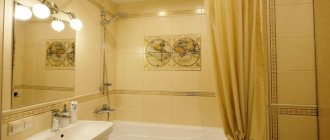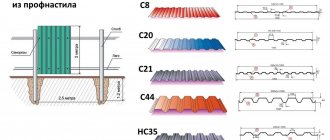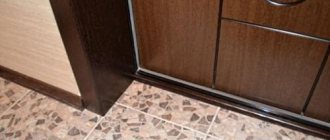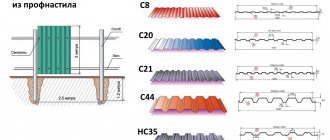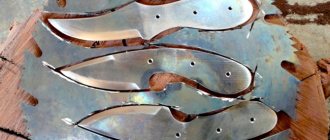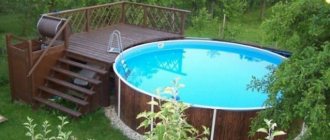If you are looking for a home with energy efficient features that will provide a comfortable, quiet, weather-resistant home, a recessed underground home may be for you. How to make an underground house?
There are two main types with a recessed design - underground and embankment house.
Buried dwellings underground
Let's start with the homes of celebrities and top sports stars. And on this list we can’t go past Gary Neville’s eco-house, which is known for its functionality and original appearance.
- Tent fabric
- Stove for a long-burning winter tent
- Stove tent for winter fishing
- Overnight in a tent in winter
- The best place to shelter from a tornado
- How to pitch a tent
- How to build a bunker with your own hands
The outside of the house is shaped like flower petals, but it is actually a round house built on a hill. With a price tag of €3.2 million, it is one of the most affordable luxury homes in the world. A number of rooms have a ceiling hatch. The building has a gym, terrace and greenhouse. In addition, there is a rainwater harvesting system that supplies the house with water, as well as other environmentally friendly systems such as a windmill and solar panels that provide electricity. The house can be considered autonomous.
This is interesting: Are we building a turnkey house for 1,000,000 million rubles with our own hands?
Eco-hotel Bella Vista Hotel in Italy
In modern times, there is an influx of ideas and concepts when it comes to the formation of environmental building compositions.
Many people have chosen these modern technologies to implement their own designs.
In addition, there are now many eco-hotels that have appeared or have been modified. The most unusual hotel in the world, Bella Vista, is a wonderful example of this format.
In the next photo you can see its design in winter.
This is the latest project of the KlimaHotel© brand and can be found in the Italian city of Bolzano. It was designed by architect Matteo Thun and is focused on sustainability and ecology.
The masterpiece included the formation of eleven separate dormitories, built on a hilly terrain.
All these structures are equipped with modern equipment, sustainable heating, air conditioning and environmentally friendly construction methods.
Local resources during the construction process were used from the surrounding areas, and in the decoration, interesting decorative ideas were focused on creating a relationship with the surroundings, trying to combine disparate elements to create a harmonious appearance. This phenomenal project has attracted many fans.
Pros of underground housing
There are many benefits to building a home underground. If you are not familiar with this type of housing, you may not be aware of the many benefits of underground living. Here are just a few of the most beneficial reasons to build a home below ground:
- Quiet – When your home is located below the surface of the earth, it creates a natural insulation from environmental noise. You don't hear the hustle and bustle of traffic or other distractions. Those who live in houses underground say it is a very peaceful way of life, with no distractions or noisy neighbors.
- Energy Efficient – Strawberries are much more efficient than above ground housing. You can save 80%-90% on your heating and cooling costs compared to a private building made of sibit, panel construction, wood or brick. When you're underground in the winter, the earth insulates the house and retains heat, while in the summer the earth creates natural cooling.
- Weather Protection – You are protected from many types of bad weather such as snowstorms, hurricanes and gale force winds. One type of natural disaster that you will have to worry about (depending on your location) is flooding. If your underground home is built in an area prone to flooding, this can be a significant problem, and special pumping systems should be a must-have feature in your home.
- Security - there is limited access to the inside of the house and the nondescript structure, which is unlikely to be of interest to intruders.
- Silence and unity with nature, which will be especially interesting for lovers of a quiet and measured life away from the noisy metropolis and city bustle. Also, such a house will become your secret lair for privacy and relaxation.
How to make a device for laying bricks with your own hands, read on our website.
In harmony with nature
How to build a house from 100x100 timber with your own hands: step by step + video
The creator of the unique Nautilus house is Mexican architect Javier Senosiain. Now he is known for a new trend that he is actively promoting around the world: organic architecture.
According to Senosiain, there should be no sharp corners in the house. Shapes and lines should be as natural as possible, similar to what we can see in the natural world. It is from here that the architect draws inspiration for his projects. The house you see in the photo was built in Mexico, in Naucalpan, a small city northwest of the country's capital, Mexico City.
It’s not difficult to check whether the oil we took from the store shelf is real.
If everyone decides to become vegetarian, 20,000 species of animals will have nowhere to live.
How to celebrate the New Year during a pandemic: recommendations from Russian doctors
Javier Senosiain is the author of several books and studies on organic architecture. The idea of houses of this type, according to the architect, was born from the desire to create a healthy environment where a person will be comfortable psychologically and physically, and at the same time will not harm the environment.
Senosiain views humans as an integral part of nature, and not as a species that can intervene and change the face of the planet. The houses he designs are reminiscent of prehistoric times when man lived in caves, and are a bit like the shelters that animals make for themselves.
The architect is convinced: the best solutions are already found in nature, we just need to pay attention to them and learn to apply them in everyday life. Christmas tree $500
Kim Kardashian decided to give money to 1000 lucky people
A Simple Night Habit That Helped Relieve Stress and Improve Sleep
Particularly dangerous: how to protect children from the new strain of coronavirus
Under the Christmas tree $500. Kim Kardashian decided to give money to 1000 lucky people
A Simple Night Habit That Helped Relieve Stress and Improve Sleep
Particularly dangerous: how to protect children from the new strain of coronavirus
House built in the hills or underground: photo
Most of the exteriors of modern hill houses are designed to match the colors and shapes of the surrounding nature. This is done in order not to conflict with the environment, creating the impression of merging with nature. The territory of the house and the facade are usually completed using local raw materials - marble, stone or their concrete imitations. The roof is usually flat and smooth. In many cases, it acts as a platform for a layer of soil with grass and other greenery.
Having a yard and pool or barbecue area near the wilderness in the hills is another exciting benefit of underground homes. But this option requires long-term landscape planning and concrete pouring of walls to protect the area from landslides.
Villa Vals, Switzerland
We start with the Swiss Villa Vals, this project is built into the alpine slopes of Vals. SeARCH and CMA collaborated on this amazing home, the design of which shows a sincere respect for nature. The facade of the house is made of Valser quartzite, mined from a nearby mine (photo by SeARCH Architecture and Urban Planning).
Underground Retreat
The dwelling has a stone courtyard with a natural hot spring for bathing. This is the ideal place to enjoy the breathtaking views in comfort.
Stone courtyard of an underground house
The interior floors of the house look like concrete boxes nested inside each other. On the ground floor there is a living room, kitchen and bedroom, which is also a library. Dutch decor master Thomas Eyck also had a hand in the development of this project. Furniture, textiles and ceramics were created by renowned interior designers such as Hella Jongerius and Studio Job.
silty area of the Swiss underground house
The elongated table and artistic lighting in this home's dining space look great.
Dining room of the underground house Villa Vals
Bunk and double beds on podiums and raised baths are just a few of the features in the villa's four bedrooms.
Light streams through modern windows draw attention to nature and beautiful views outside.
Underground house bedroom
How is Villa Vals environmentally friendly? This secluded location is thermally insulated and uses hydroelectric power thanks to a nearby reservoir. Below you can see the villa at night. Looks amazing, doesn't it?
Villa Vals at night
DIY underground house
Building a deck for a house built on a hill is another brilliant opportunity to create the unique home of your dreams. Indeed, the breathtaking overall view from the hill, the natural decoration of the walls and ceiling should inspire life-affirming ideas and plans for the future.
Even a small sitting area on your front porch can have the same inspiring effect.
This is interesting: Do-it-yourself autonomous house: Everything you need to create - Instructions
Woodlyn Park - the first hobbit motel on the planet
When you think of underground structures, it is impossible not to imagine a village of fairy-tale hobbits.
This definition of life is now a source of inspiration for numerous people.
Movie fans have tried to copy these small, unusual houses built into the side of a hill, with some even managing to create incredible and wonderful structures.
One of them is the first hobbit hotel on the planet, located in Woodlyn Park on the North Island of New Zealand.
This facility was built using polystyrene blocks, which allows the premises to create a cool atmosphere in summer and a warm climate in winter.
This original, rational method of insulation was implemented taking into account the uniqueness of the masterpiece.
The rooms in the cottage are quite spacious. They are superbly equipped and feature high quality parts.
Each block has its own kitchen and shower room, and can accommodate up to six people.
The motel has a café and restaurant, and guests can enjoy a variety of adventures during their trip.
Bulk
An infill house can be built partially below ground level, covering more of the wall of the structure. The design involves covering the sides and sometimes a roof with dirt to protect and insulate the mound house.
The open front of the house, usually facing south, allows the sun to illuminate and warm the interior. The floor plan is arranged so that the common areas and bedrooms share light and warmth with southern exposure.
This can be the least expensive and easiest way to build a ground protected structure. Strategically placed skylights can provide ample ventilation and daylight in the northern portions of an earthen home.
In a penetrating mound design, the earth covers the entire house except where the windows and doors are. An infill house is usually built at, around, and on top of the ground level. This design allows cross ventilation to access natural light from more than one side of the house. New energy sources will provide the desired amount of heat and other resources in general.
Perhaps in the future people will live in underground cities.
If we recall the science fiction novel by the famous English writer H.G. Wells, “The First Men on the Moon,” the local inhabitants of the Selenites, who lived in “sublunar caves,” created an entire highly organized civilization with a complex society and division of labor. At the same time, they did not understand what war and violence were, and earthly people seemed to them to be enjoying war and alien moral values. Perhaps people will soon live underground, creating a society of the future.
Sancaklar Mosque in Istanbul
Architects: Emre Arolat Architects (EAA)
And the first of them is an atypical underground mosque on the outskirts of Istanbul designed by Emre Arolat Architects.
The architects wanted to touch the origins of Islam and were inspired by the Hira Cave, where the Prophet Muhammad, according to legend, met the Archangel Gabriel. They abandoned both the crescent and the classic minaret. Thus a new sacredness was born: devoid of traditional patterns and symbols, and hidden from the bustle and chaos of the city by kilometers of uninhabited territory and a massive layer of earth. Here, as if in that cave, believers can find peace and enter into an invisible dialogue with their distant ancestors.
Through cracks in the stone wall, daylight mysteriously penetrates into the mosque, as in the famous Church of Light by architect Tadao Ando.
This temple takes us back to the times of the formation of Islam and at the same time is a space of modern spirituality and minimalism.
Advantages and disadvantages
Like any home design, underground homes have advantages and disadvantages.
On the other hand, a protected home is less susceptible to extreme outside temperatures than a normal one. In-ground homes also require less external maintenance, and the ground surrounding the home provides sound insulation. In addition, most earthen house plans “blend” the building into the landscape more harmoniously than a conventional one. Finally, underground homes may cost less to operate because they offer additional protection from high winds, storms and natural disasters such as tornadoes and hurricanes.
The main disadvantages of underground homes are the initial construction costs, which can be up to 20% higher than conventional ones, and the increased level of professionalism required to prevent moisture problems during design and construction.
Eco village in the Preseli mountain range in west Wales
There are many different directions and all kinds of building layouts, but this village is the most interesting project.
It was equipped with huts built using straw and mud in picturesque mountains with green areas.
The buildings look very interesting and aesthetically pleasing, which attracts a large number of people here to enjoy country life and grow their own crops.
This unique community was created in 1993 and remained a secret for several years.
The village was discovered five years later when tourists saw sunlight emanating from a photovoltaic panel located on the main building.
These huts were very well camouflaged, surrounded by trees and bushes, but the owners were not given a building permit.
After this period, 22 villagers came to the area. Bulldozers tore down their old homes, but their way of life has finally improved thanks to planning permission.
As a result, they received cottages with toilets, agricultural hangars and work workshops.
Building Materials and Considerations for Underground Homes
Construction materials for each earthen structure will vary depending on site characteristics and type of structure. The materials must, however, provide a good surface to be waterproof and insulating in order to withstand the pressure and moisture of the surrounding earth.
Concrete is the most common solution for building construction because it is strong, durable and fire resistant. Concrete blocks reinforced with steel bars placed in the main masonry can also be used and usually cost less than cast-in-place concrete.
Wood should only be used for light structural work. Steel can be used to strengthen screeds, columns and concrete reinforcement, but must be protected against corrosion if exposed to groundwater. Metal is also expensive, so it must be used efficiently to be economical as a structural material.
Other Design Considerations
Waterproofing
Waterproofing can be a problem for such structures. Keep these ways in mind to reduce the risk of water damage to your structure:
- choose the site carefully,
- plan drainage both on and below the surface of the underground house for watertightness.
Waterproofing systems must use:
- Rubberized Asphalt – Combines a small amount of synthetic rubber with asphalt and coated with a layer of polyethylene to form sheets. It can be applied directly to walls and roofs and has a long service life.
- Plastic and vulcanized sheets are among the most common types of underground waterproofing. Plastic sheets include high-density polyethylene, chlorinated polyethylene, polyvinyl chloride and chlorosulfonated polyethylene. Suitable vulcanized membranes or synthetic rubbers include isobutylene isoprene, ethylene diene copolymer, polychloroprene (neoprene) and polyisobutylene. For all of these materials, seams must be sealed correctly to protect against leaks.
- Liquid polyurethane is often used in areas where it is not convenient to apply a membrane and is sometimes used as a coating over insulation on underground structures. Please note that weather conditions should be dry and relatively warm during application.
- Bentonite is a natural clay collected into panels that are nailed to walls or applied as a liquid spray. When bentonite comes into contact with moisture, it expands and seals out the moisture.
Humidity
Humidity levels can increase in ground-sheltered homes during the summer, which can cause condensation on interior walls. Installing insulation on the outside of the walls will prevent the walls from cooling down and improve the cooling effect of the walls. Careful planning by the underground home designer is important to eliminate future problems.
Insulation
Although the insulation in an underground building does not have to be as thick as in a regular house, it is necessary to make an earthen house comfortable. Insulation is usually installed on the exterior of the house after waterproofing material has been applied, to preserve the interior of the building. If boards are used, the protective layer of the board should keep the insulation from contact with a wet surface.
Designing and building a new energy-efficient home or renovating an existing one requires careful planning and attention to detail. An integrated systems approach helps homeowners, architects and builders develop successful strategies to optimize home energy efficiency.
This approach views the home as an energy system with interdependent parts, each of which affects the performance of the entire system. It also greatly influences the location and local climate for the main consideration.
To take full advantage of the systems approach, computer simulations of the entire house are required that compare multiple combinations of variables to design the most cost-effective and energy-efficient solution.
Important variables when designing an underground house:
- Conditions of the place
- Local climate
- Appliances and household appliances
- Insulation and air convection
- Lighting and daylight
- Heating and cooling
- Water heating
- Windows, doors and skylights.
Some benefits of using an integrated systems approach include:
- Reduced utility and operating costs
- Increased comfort
- Noise reduction
- Healthier and safer indoor environment
- Improved building durability.
The systems approach can be used with any home structure. Once your energy needs have decreased, you need to consider adding renewable energy systems that generate electricity and thermal water.
House on the other side in a dream
I am swimming across the canal, which is actually located next to my house, the only difference is that the canal in the dream has not yet become shallow. I go ashore and find myself in a meadow where pink clover grows, I pass through it and find myself in the city. Very narrow streets, paved with stone, like in old London, only the houses are located too close to each other. One of the houses with a corner part, it is completely bought up and belongs to one person; This is the house I'm heading to. In front of me I see a very beautiful girl in a green dress, with blond hair tied in a ponytail. My hair was a little short, so it kept falling out. It turns out that this girl is a servant; I dream in third person and always follow this girl. She takes me into the house, later some military man appears in it along with his army, he came to the hostess. I run out and run back to the canal, returning to the other side. It's like I'm swimming for the second time. I go out to the place where there was a meadow, but now there is a field with grass yellowed from the hot sun. There are already tramps standing in the field, burning something in the tanks. I go around them and run to the maid. The maid and the military man deceive the mistress, the military man gives his soldiers some task, they remain in possession of this house. The military man says that he loves this maid, and that the mistress has been on the river for two hours, but may return soon. They are setting the table. The table itself is rectangular and has a white tablecloth. The girl and the soldier sit on opposite sides: she is on the left, he is on the right. They eat bread and cheese, and I again run away from them to the canal and swim away. I swim for the third time to the place where there was a meadow and a field, I go ashore, but there is nothing there anymore - only bare earth and tramps.
Choosing a site for construction
Underground houses must be built on terrain that must first be selected. It's better if you can find the top of the hill. This will prevent groundwater from seeping into the house. It is recommended to orient the windows on all four sides, which will provide the rooms with sufficient light.
When building a house, the top part of the soil must be cut off and returned to its place after completion of the work. In such houses it is rare to find additional lighting. There are enough natural rays so that, once inside, you will not feel the difference between such a building and an ordinary brick house.
There are two types of underground houses:
The latter type involves the location of the building underground and below the upper level. The bunded houses are located above ground level or are partially hidden behind the level line. However, their surface is still covered with soil. After completion of the work, the soil is returned to its place so that it can become part of the site.
Neglinka is free
One of the experts we mentioned, YouTube blogger Daniil Davydov, demonstrates on his channel a painting by Apollinary Vasnetsov “Moscow-town and its environs in the second half of the 12th century.” A mountain of incredible size is Borovitsky Hill, on which the Kremlin now stands. Ahead is the Moscow River, but to the north-west in the ravine flows the Neglinka River, glorified by Vladimir Gilyarovsky. Then Neglinka was important for the defense of the fortress. But in the 19th century the situation changed. By 1811, the river had turned into a foul-smelling slurry, flowing right through the center of the city. Residents of private houses, of which there were plenty in Moscow at that time, poured slops there, since sewerage did not yet exist. The goldsmiths added some spice to this situation. This is the name given to the first sanitation workers who collected sewage into huge barrels. “They were only allowed to work at night,” says Daniil. “The goldsmiths wanted to go around as many houses as possible, so the barrels were often emptied outside of the landfills. The contents simply poured into the upper reaches of the Neglinka under cover of darkness.” Therefore, the first section of Neglinka was hidden underground even before the war with Napoleon.
Features of dugout construction
Underground construction of houses may involve the creation of a dugout. In this case, the house is located on a terrain that has a slight slope. The roof should be covered with soil; it is usually made gable; in rare cases, such a structure can be vaulted or flat.
The entrance must be made from the end, equipped with a canopy. Steps are lined up to the door. Windows are usually found in the roof or gables. A special feature of the dugout is the presence of only one floor. If you make two, it will be an ordinary building with a basement. The width of the building depends on the span of the floor, but this value usually does not exceed 6 m.
For construction, it is necessary to prepare a pit, inside which walls are erected. It is important to waterproof them and install support pillars on which the roof will then sit. After completing the construction of walls and ceilings, as well as laying waterproofing materials, the roof is covered with soil.
Creation of an apartment building according to a simplified scheme
According to Andrey Merkulov, using Robert Kiyosaki’s strategy of “cutting up” a house into apartments and wisely using mortgage opportunities, or attracting investors to the project, can make it possible to implement an apartment building project without any investment or down payment at all.
The scheme works simply:
- You take a large house, which is either purchased on credit, or through co-investment, or in any other way without attracting your own funds
- The large house is divided into several apartments. For example, a building with an area of 150 sq. meters turn into an apartment building with 5 apartments
- Apartments in the created apartment building are rented out and generate income that covers the housing loan. Profit allows you to achieve significant cash flow, which turns into passive income.
If the scheme is implemented correctly, then instead of working for more than one year for your own apartment, you will create many apartments at once at the expense of investors, one of which, thanks to a well-thought-out scheme, is fully paid for by the tenants of other apartments.
Construction rules
If you decide to build an underground house with your own hands, then you should follow certain rules. It is important to remember that the building will be exposed to moisture. Therefore, construction materials must be appropriate. For example, wood is treated with water-repellent impregnation. It is best to use monolithic concrete or ceramics. Aerated concrete is not suitable, because it can absorb moisture.
Before choosing waterproofing, it is important to consider all possible situations. The most common way to build an underground or bunded house is to dig a pit. In this case, the house should be buried more than 1 m compared to the planned size of the building.
A shallow foundation is made on the outer sides of the house, the endurance of which is calculated taking into account the loads. If the wall thickness is not too large, the soil load should be taken into account. The roof structure is usually made on the basis of a rafter system, but you can use the plank installation method.
Aloni House in the Cyclades Islands
Another way to integrate the apartment with the landscape is to use resources found in the construction field and make the façade disappear into the scenery.
That is why a large number of landscape design projects on hills were built using local raw materials and resources: such as stones or wood.
Aloni house has decoration based on the same aspects. However, the arrangement is a little different in nature compared to what we saw in the article before.
Situated in a beautiful area of the Cyclades Islands, the structure responds beautifully to the landscape.
The designers of the Deca Architecture workshop decided to abandon the standard typology of this home decor.
They used building materials that have minimal impact on nature and are also rational in the form of thermal insulation coatings.
The residence has a single-level structure and measures 250 sq.m.
The wall surfaces are made using undistributed earth, which regulate the temperature through the green roof, which also provides thermal insulation and helps the structure disappear into the surrounding scenery.
Interior photography provided by the Internet portal: Homedit.
Example of a real investor
Of course, the scheme of earning money from apartment buildings without attracting their own funds is already used by many young businessmen. Some of them work without actually leaving home. For example, Karina Sokolova bought a one-room apartment on the secondary market in the Moscow region for 2.5 million rubles. At first, she rented out housing according to the standard scheme for 22 thousand rubles, which barely made it possible to cover mortgage payments - after cutting the housing into 2 studios, each individual apartment began to bring 17 thousand rubles. As a result, in addition to the mortgage payment, the businessman was able to organize passive income in the amount of 10 thousand rubles.
As you can see, the scheme for making money on apartment buildings is quite realistic and some successful businessmen are already receiving 100-300 thousand rubles a month thanks to a competent profitable scheme.
How to earn money for an apartment - take a large house, even without attracting your own funds, and divide it into several rental apartments in less than a year.
The scheme from Andrey Merkulov has its own characteristics and really allows money to work for you, and not vice versa, however, before you begin to implement it, it is important to familiarize yourself with the relevant literature or attend specialized trainings
Author of the article: Andrey Merkulov
An active entrepreneur, owner of a number of investment projects, an expert in the fields of real estate, marketing, and business automation.
Author of 6 books about business, current member of the AMA (American Marketing Association, www.marketingpower.com), organizer of business conferences.
Internet marketer, expert in quickly launching a business and building a management system.
An example of a real earnings scheme
Instead of working for your apartment for a single year, you use the funds raised to purchase a house with an area of 150 square meters. meters within a radius of 20 km from Moscow - real estate will cost you approximately 5 million rubles. The loan payment in this case will be 60,000 rubles per month, but the house should be divided into separate studio apartments. It is studio apartments that bring the greatest profit under this scheme, since they can have an area of only 15-18 square meters. meters and at the same time remain very attractive to tenants. Thus, in a large house you will create 8 separate apartments, each of which can bring 18 thousand rubles per month from rent. However, you rent out 7 apartments, and you can just keep one for yourself. Thus, in less than a year, you earn money for your own home. As for the 7 apartments in the house, they bring in 126 thousand rubles per month through rental. As you can see, this is quite enough to cover the loan and additional income in the amount of 45 thousand rubles.
Subsidy options
There are two options for individual construction:
- Targeted – the state provides financial assistance before the start of construction work. Its size depends on the estimate of the construction project and the region in which the construction of residential real estate is planned. Each region has its own legislation.
- Compensation – provided after completion of construction work. The amount of assistance is determined based on the documents provided by the applicant on construction costs.
The benefit is not issued immediately. A citizen submits an application to the local administration, the government agency reviews it and analyzes the grounds for issuing funds.
Selection of plants
To prevent the plant roof from withering away in the first dry summer or from freezing in the cold winter, it is necessary to select unpretentious and winter-hardy plants that can exist well in a closed ecosystem. Landscape designers and plant growers recommend adhering to the following rules when selecting flora:
- Small and horizontally located root system. Mosses and grasses best meet this criterion.
- Frost resistance. Plants must be able to withstand freezing temperatures typical of winter.
- Drought resistance. It is necessary to choose plants so that they only need natural watering during rain.
Remember that exotic plants that are not typical for our climate zone require more careful care, so you can plant them only if you are prepared to spend a lot of time and money to provide them with appropriate living conditions.
Fruit gardens on the roof
Operable vegetative roof
Ventilation installation
Ventilation for an underground garage and home is necessary. The first installation method involves installing a monoblock. This system will extract exhaust air and provide an influx of new air. The monoblock provides ventilation, and its advantage is ease of installation.
But if you are afraid of its high cost, then you should use the second method, which involves installing a modular system. The design has two separate blocks, one of which is responsible for the inflow, while the other is responsible for the outflow of air. The system has special sensors and provides automatic adjustment of operation.
Recommendations from experts
When a residential underground house is being built, you can use concrete or brick when constructing the walls. In this case, the ceiling is made monolithic and has the shape of a vault. This design will be more durable. Waterproofing of the floor and walls must be made in the form of a continuous contour. If the house is buried more than 1 m, then there is no need to insulate the building. This applies exclusively to the walls, while the roof must be additionally insulated.
When installing floors, it is important to install waterproofing, thermal insulation and screed. At the final stage, the decorative coating is installed. Modern underground houses must have a drainage system, which is located near the walls along the entire perimeter. In this case, the water will drain and be directed into the drainage pipe, which should be located below the level of the house. The output must be directed to the drain.
What are the types of subsidies?
Financial assistance for the construction of wooden houses is allocated in two ways, regulated by the bill:
- Target payment, which is issued to the developer before the start of work. The documentary basis for such a benefit is the estimate.
- Compensation, where the amount of money goes to the citizen’s account after the construction of a wooden house. The main condition is that you must apply for payment no later than 24 months after the construction of the building.
From here we see the absolute freedom of the applicant to apply for a subsidy: before or after the actual construction of a wooden house. This is undoubtedly an advantage of the bill.





